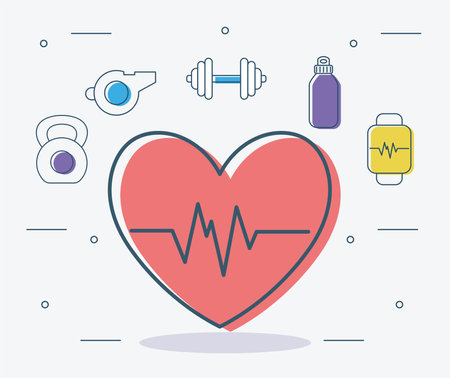Introduction to Cardiac Rehabilitation in India
India, a country celebrated for its vibrant cultural diversity and deep-rooted healing traditions, is currently facing a significant rise in cardiovascular diseases (CVDs). In recent years, heart-related ailments have become one of the leading causes of mortality and morbidity across both urban and rural populations. Changing lifestyles, increased stress, dietary habits, and limited physical activity are major contributors to this growing burden. Given the unique sociocultural fabric of India, there is an urgent need to implement cardiac rehabilitation strategies that not only address medical needs but also resonate with local beliefs and practices. Traditional systems like Ayurveda, along with natural home remedies passed down through generations, offer holistic approaches that can complement modern cardiac care. As we explore the role of these time-honoured remedies within cardiac rehabilitation, it becomes clear that integrating culturally adapted methods can enhance patient engagement and recovery outcomes in the Indian context.
Essence of Ayurveda in Heart Care
Ayurveda, India’s ancient science of life and longevity, has always held the heart (Hridaya) as a seat of consciousness and vitality. Its approach to cardiac wellbeing is holistic, focusing on balancing the three doshas—Vata, Pitta, and Kapha—that govern all bodily functions. According to classical Ayurvedic texts like Charaka Samhita and Ashtanga Hridayam, an imbalance among these doshas can lead to various heart ailments, including high blood pressure (Rakta Vata), palpitations (Hridroga), and cholesterol-related issues.
The Three Doshas and Cardiac Balance
| Dosha | Role in Cardiac Health | Common Imbalances |
|---|---|---|
| Vata | Regulates heartbeat, circulation, nervous impulses | Arrhythmia, anxiety-induced palpitations |
| Pitta | Controls metabolism, temperature regulation in the heart region | Inflammation, hypertension, burning sensation in chest |
| Kapha | Provides stability, strength to heart tissues and vessels | Atherosclerosis, fluid retention, heaviness in chest |
The Role of Herbs in Heart Health
Ayurveda prescribes a range of herbs renowned for their cardioprotective properties. Arjuna (Terminalia arjuna) bark is celebrated for strengthening cardiac muscles and managing blood pressure. Ashwagandha helps reduce stress and anxiety—common risk factors for heart disease. Other herbs like Brahmi, Pushkarmool, and Guggulu support healthy cholesterol levels and improve circulation. These time-tested botanicals are often combined in traditional formulations such as Arjunarishta or Hridayarnava Rasa, tailored to individual constitution (prakriti) and specific health needs.
Ancient Wisdom: Lifestyle & Diet Recommendations
Ancient Indian texts emphasize that true heart care extends beyond medicines. Daily routines (dinacharya), seasonal practices (ritucharya), and mindful eating habits are core to maintaining cardiac wellness. Ayurveda recommends freshly cooked sattvic food—rich in whole grains like millets (ragi, jowar), pulses, green leafy vegetables, moderate use of ghee, and spices such as turmeric and coriander. Stress management through pranayama (breathing techniques), meditation, and gentle yoga postures is also integral to nurturing a resilient heart.
Conclusion: Relevance for Modern India
The wisdom of Ayurveda offers a sustainable path for cardiac rehabilitation in India by blending natural remedies with everyday living. Its focus on personalised care—addressing mind-body-spirit harmony—remains deeply relevant amidst today’s fast-paced lifestyle challenges. For elderly Indians or those recovering from heart conditions, embracing these age-old principles can foster not just physical recovery but also emotional peace and spiritual well-being.
![]()
3. Natural Remedies and Traditional Practices
India’s rich heritage of natural healing is deeply woven into daily life, especially when it comes to cardiac well-being. Many Indian households rely on time-honoured remedies and routines that support heart health in gentle, holistic ways. These practices are not only accessible but also culturally cherished, often passed down through generations.
Yoga: Movement for the Heart
Yoga is more than just physical exercise; it is a way of life that supports mental and physical harmony. Simple asanas such as Tadasana (Mountain Pose), Bhujangasana (Cobra Pose), and Savasana (Corpse Pose) are commonly recommended for their calming and restorative effects. Regular yoga practice helps improve circulation, lower stress, and promote a balanced lifestyle—vital elements for cardiac rehabilitation.
Pranayama: Harnessing Breath
Breathwork or pranayama is another pillar of traditional Indian wellness. Techniques like Anulom Vilom (alternate nostril breathing) and Kapalbhati (skull shining breath) are widely practiced to reduce anxiety, enhance oxygenation, and strengthen the respiratory and cardiovascular systems. Families often start their mornings with pranayama, believing it brings calmness and clarity that protect the heart throughout the day.
Herbal Infusions and Home Remedies
The Indian kitchen doubles as an apothecary, where herbs and spices play a pivotal role in promoting heart health. Commonly used herbs include Arjuna bark, renowned for supporting heart function; tulsi (holy basil), which helps manage cholesterol; and garlic, known to regulate blood pressure. Herbal teas made from these ingredients are sipped daily in many homes, providing comfort and gentle healing.
Dietary Recommendations Rooted in Tradition
A balanced diet forms the cornerstone of cardiac care in India. Local wisdom encourages the use of whole grains like millets and brown rice, seasonal fruits such as pomegranate and amla, and healthy fats derived from mustard oil or ghee in moderation. Meals are often flavoured with heart-friendly spices including turmeric, cumin, coriander, and fenugreek, all believed to aid circulation and reduce inflammation.
Cultural Continuity in Modern Times
The enduring relevance of these natural remedies lies in their simplicity and adaptability. Whether practiced in urban apartments or rural villages, these traditions continue to provide comfort, resilience, and hope for those embarking on their cardiac rehabilitation journey in India.
4. Integration of Ayurveda with Modern Cardiac Rehabilitation
In India, the integration of Ayurveda and natural remedies into cardiac rehabilitation is gaining traction, reflecting a unique blend of ancient wisdom and contemporary medical science. This holistic approach aims to optimize patient recovery by addressing not only the physical but also the mental and spiritual aspects of health, resonating deeply with Indian cultural values. Leading cardiac rehab programs in India are increasingly adopting a multidisciplinary model that brings together cardiologists, Ayurvedic practitioners, physiotherapists, and nutritionists to craft personalized care plans. These plans often combine standard interventions—such as medication management, exercise routines, and risk factor modification—with Ayurvedic therapies like Panchakarma detoxification, herbal formulations (e.g., Arjuna bark for heart strength), meditation, and yoga. Such integration supports improved compliance, reduces stress, and enhances overall well-being.
Key Components of Integrated Cardiac Rehab Programs
| Modern Medical Interventions | Ayurveda & Natural Remedies |
|---|---|
| Pharmacological therapy Supervised exercise Dietary guidance Risk factor control (BP, cholesterol) |
Herbal medicine (Arjuna, Ashwagandha) Yoga & Pranayama Meditation & stress management Personalized diet based on dosha |
Cultural Sensitivity and Patient Acceptance
The Indian population’s trust in Ayurveda fosters greater acceptance of cardiac rehab protocols when traditional elements are included. Patients often report higher satisfaction and adherence when familiar practices—like morning yoga sessions or home-based herbal teas—are part of their daily routine alongside hospital care.
Outcomes and Future Directions
Preliminary studies from Indian centers indicate that this integrated approach can lead to faster recovery, better quality of life scores, and reduced recurrence of cardiac events. As more hospitals embrace this model, ongoing research and systematic documentation will further clarify the long-term benefits for India’s diverse patient population.
5. Community and Family Support in Cardiac Recovery
In the Indian context, cardiac rehabilitation is not just an individual journey but a shared experience deeply rooted in the country’s cultural fabric. The significance of family, community, and social circles plays a vital role in the holistic recovery process of heart patients. Ayurveda emphasizes the importance of positive emotional support and harmonious relationships as part of the healing journey. In India, families often come together to care for their loved ones during illness, providing both emotional reassurance and practical help.
The Power of Togetherness
Indian families are known for their close-knit structure, where several generations may live under one roof. This unity becomes especially important during times of illness. Family members assist in following Ayurvedic dietary guidelines, preparing herbal remedies, and supporting regular routines such as yoga or meditation that promote cardiac wellness. Their presence alleviates stress and loneliness, which are major contributors to cardiac complications.
Community Engagement and Shared Caregiving
Beyond the household, communities play an active role in supporting cardiac patients. Neighbours, friends, and local groups often check in on patients, offer encouragement, and sometimes organize group wellness activities inspired by Ayurveda—like collective yoga sessions or herbal remedy workshops. This spirit of shared caregiving embodies traditional Indian values and strengthens the patient’s resolve to recover.
Holistic Healing Through Social Support
Ayurveda recognises that healing is most effective when it addresses mind, body, and spirit together. Social support networks help reduce anxiety and depression, foster a sense of belonging, and motivate patients to adhere to prescribed natural therapies. In India, rituals such as evening prayers or community gatherings provide spiritual upliftment alongside physical care.
Thus, in the Indian model of cardiac rehabilitation, recovery is nurtured by a web of family and community support. This collective approach not only complements Ayurvedic principles but also enhances the effectiveness of natural remedies by embedding them within a strong social framework—a true reflection of India’s enduring values of togetherness and shared responsibility in health.
6. Challenges and Opportunities in Promoting Ayurveda-based Rehab
Integrating Ayurveda and natural remedies into cardiac rehabilitation across India presents both unique challenges and promising opportunities.
Barriers to Accessibility
One of the foremost challenges is accessibility. Many rural and semi-urban areas, where a significant portion of Indias elderly population resides, lack well-established Ayurvedic healthcare infrastructure. Travel distances, limited transport options, and financial constraints can hinder access to qualified practitioners and authentic herbal medicines, especially for those recovering from heart conditions who require regular monitoring.
Lack of Awareness & Education
A major barrier is the limited awareness about the role Ayurveda can play in post-cardiac care. While traditional wisdom is often passed down through generations, modern cardiac patients and their families may be unaware of how therapies like Panchakarma, dietary interventions, or yoga can complement allopathic treatments. Furthermore, misconceptions about Ayurveda—seeing it as slow-acting or only preventive rather than rehabilitative—can impede acceptance among patients and healthcare professionals alike.
Scientific Validation & Standardisation
The need for robust scientific validation is another significant challenge. While Ayurveda boasts centuries-old healing traditions, there remains a gap in large-scale clinical trials that meet global evidence-based medicine standards. This limits mainstream cardiologists’ confidence in recommending these therapies, especially in tertiary urban hospitals. Also, standardization of Ayurvedic formulations and treatment protocols is essential to ensure consistent quality and safety for cardiac patients.
Opportunities for Integration
Despite these hurdles, India stands at a unique crossroads with immense opportunities to blend its rich heritage with modern medicine. There is growing governmental support through initiatives like the Ministry of AYUSH, which aims to integrate Ayurveda into public health programs. Multidisciplinary collaborations between cardiologists and Ayurvedic experts are increasingly seen in metropolitan hospitals, paving the way for hybrid rehab models tailored to Indian lifestyles.
Community-Based Interventions
The rise of community health workers trained in both allopathic first aid and basic Ayurvedic practices can bridge gaps in awareness and accessibility. Workshops and outreach camps in local languages help demystify Ayurveda’s benefits for heart health among elders.
Towards Holistic Cardiac Recovery
The future holds promise as more research emerges on herbal remedies such as Arjuna bark (Terminalia arjuna) for heart wellness, validated by modern science. With proper regulation, education campaigns, and continued collaboration between systems, Ayurveda can become an integral part of India’s holistic approach to cardiac rehabilitation—honouring tradition while embracing innovation.
7. Conclusion: The Path Forward for India
As we reflect on the journey of cardiac rehabilitation in India, it is clear that integrating Ayurveda and natural remedies with modern medical science offers a unique and promising roadmap for our nation’s heart health. Ayurveda, rooted in centuries of Indian wisdom, has consistently promoted a balanced lifestyle, herbal interventions, and mind-body harmony as tools for preventing and managing cardiac conditions. When these age-old practices are thoughtfully combined with evidence-based modern therapies, patients receive holistic care that respects both tradition and innovation.
The key takeaways from our discussion highlight the importance of personalised approaches, where dietary habits inspired by Indian cuisine, yoga, pranayama, and herbal supplements are tailored alongside allopathic treatments. This synergy not only addresses the physical aspects of cardiac rehabilitation but also nurtures emotional well-being and spiritual resilience—values deeply cherished in Indian culture.
Moving forward, collaboration among Ayurveda practitioners, cardiologists, and researchers is essential to develop protocols that are safe, effective, and accessible to India’s diverse population. Community education, family involvement, and respect for local customs will further strengthen the adoption of integrated care models across urban and rural settings alike.
In embracing both the wisdom of our ancestors and the advancements of modern medicine, India can pave a compassionate path towards healthier hearts. Let us gently remind ourselves that healing is not merely about curing disease—it is about nurturing balance at every level of being. By walking this blended path together, we offer hope and vitality to current and future generations across our beloved country.


